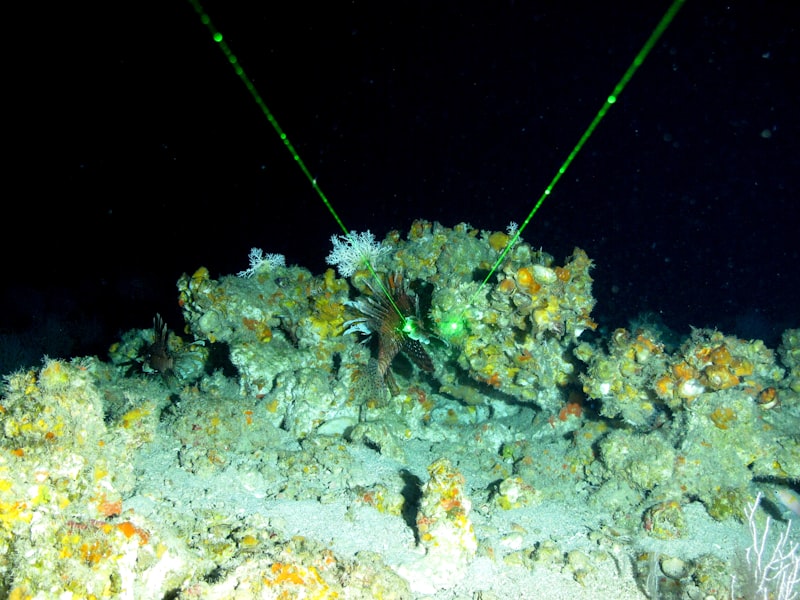What makes coral reefs truly remarkable is their biodiversity. Just like rainforests on land, these underwater marvels support an incredible array of species. From the majestic sea turtles gliding gracefully among the corals to the kaleidoscope of fish darting through the reef, every corner of this ecosystem tells a story of interconnected life.
But these stunning reefs are more than just a feast for the eyes. They play a crucial role in maintaining the health of our planet. Coral reefs act as natural barriers, protecting coastlines from storms and erosion. They also support local economies through tourism and fisheries, providing livelihoods for millions of people worldwide.
However, these vital ecosystems are facing unprecedented challenges. Climate change, pollution, and overfishing threaten the delicate balance of coral reefs. Rising sea temperatures cause coral bleaching, a phenomenon where corals expel the algae living in their tissues, turning them ghostly white and vulnerable to disease.

Despite these challenges, there is hope. Conservation efforts, scientific research, and global awareness are key to preserving these invaluable ecosystems. By reducing carbon emissions, supporting sustainable fishing practices, and establishing marine protected areas, we can safeguard the future of coral reefs for generations to come.
Exploring Coral Reefs: Nature’s Underwater Wonders
Imagine diving into the crystal-clear waters of the ocean, surrounded by a kaleidoscope of colors and shapes. Coral reefs, often referred to as the rainforests of the sea, are among the most vibrant and diverse ecosystems on our planet. These underwater marvels are not just beautiful; they play a crucial role in supporting marine life and protecting coastlines.
Coral reefs are formed by tiny creatures called coral polyps, which build calcium carbonate skeletons over time. These structures create the foundation for the reefs, providing habitats for a staggering variety of marine species. From tiny clownfish darting between the coral branches to majestic sea turtles gliding gracefully overhead, every corner of the reef teems with life.
One of the most awe-inspiring aspects of coral reefs is their incredible biodiversity. They are home to thousands of species of fish, mollusks, sponges, and other marine organisms, each playing a unique role in the delicate balance of the ecosystem. The vibrant colors of the coral itself, ranging from vivid blues and greens to striking oranges and reds, further enhance the visual spectacle of the reef.
But coral reefs are more than just a feast for the eyes; they are also vital to the health of our oceans. These ecosystems act as nurseries for young fish, providing shelter and protection during their early stages of life. In addition, coral reefs help to mitigate coastal erosion by absorbing wave energy, protecting shorelines from the full force of storms and hurricanes.
Unfortunately, coral reefs around the world are facing unprecedented threats. Climate change, ocean acidification, overfishing, and pollution are all taking their toll on these delicate ecosystems. Rising sea temperatures can cause coral bleaching, where corals expel the algae living in their tissues, turning them stark white and vulnerable to disease.
Efforts are underway to protect and preserve coral reefs, from establishing marine protected areas to promoting sustainable fishing practices. Educating people about the importance of coral reefs and reducing our carbon footprint are crucial steps in ensuring these natural wonders continue to thrive for generations to come.
Coral reefs are truly nature’s underwater wonders, showcasing the incredible beauty and biodiversity of our oceans. As we continue to explore and understand these ecosystems, we also bear the responsibility to protect and conserve them for future generations.
Coral Reefs: The Lifeline of Marine Biodiversity
In essence, coral reefs act as lifelines for marine biodiversity. They provide homes and shelter to an immense variety of marine organisms, from colorful fish darting through their crevices to intricate mollusks and sponges nestled within their structures. These diverse habitats support a delicate balance of life, where each organism, no matter how small, plays a vital role in the ecosystem.
The importance of coral reefs goes beyond their role as biodiverse hotspots. They are also crucial for coastal protection, acting as natural barriers that reduce the impact of waves and storms on shorelines. Imagine them as nature’s own breakwaters, shielding coastal communities from erosion and flooding.
Moreover, coral reefs contribute significantly to local economies through tourism and fisheries. Many communities around the world rely on reefs for their livelihoods, whether through fishing or tourism activities like snorkeling and diving. These economic benefits underscore the importance of preserving these delicate ecosystems for future generations.
However, coral reefs face numerous threats today, primarily due to human activities. Climate change, pollution, overfishing, and destructive fishing practices pose severe risks to their survival. Rising sea temperatures lead to coral bleaching, where corals expel the colorful algae living within their tissues, turning them ghostly white and leaving them vulnerable to disease.
Unlocking the Secrets of Coral Reefs: A Global Conservation Effort
Coral reefs, often referred to as the rainforests of the sea, are not just stunning underwater landscapes but crucial ecosystems supporting a diverse array of marine life. These intricate structures, built over millennia by tiny coral polyps, harbor immense biodiversity and provide invaluable benefits to both marine organisms and coastal communities worldwide.
Why are coral reefs so vital? Imagine a bustling city underwater, where each coral species plays a unique role in the ecosystem. From providing shelter and food to countless marine species to protecting coastlines from erosion, these reefs are true marvels of nature. Their vibrant colors and shapes attract millions of tourists annually, contributing significantly to global economies through tourism and fisheries.
Yet, coral reefs face unprecedented threats. Climate change, overfishing, pollution, and ocean acidification pose grave dangers to their survival. Rising sea temperatures cause coral bleaching, where corals expel the algae living in their tissues, turning them ghostly white and vulnerable to disease. Without urgent action, many reefs could disappear within decades, taking with them irreplaceable biodiversity and livelihoods dependent on them.
Fortunately, a global effort is underway to protect and restore these fragile ecosystems. Conservation initiatives range from establishing marine protected areas to promoting sustainable fishing practices and reducing pollution. Researchers and conservationists collaborate across borders to study and monitor reef health, using advanced technologies like remote sensing and underwater drones.
Each of us can contribute to coral reef conservation. Whether by reducing our carbon footprint, supporting sustainable seafood choices, or participating in local beach cleanups, every action counts. By raising awareness and advocating for policy changes, we can ensure future generations inherit thriving coral reefs teeming with life.
Coral reefs are more than just underwater wonders; they are essential to the health of our planet. Through collective efforts and individual actions, we can unlock the secrets of coral reefs and secure a sustainable future for these extraordinary ecosystems.
Why Coral Reefs Are Vital for Ocean Health: An Ecological Perspective
Imagine coral reefs as bustling metropolises beneath the waves, where every species has a role to play in the grand scheme of things. From tiny fish seeking refuge among the coral branches to large predators prowling the reef edges, each creature contributes to a delicate web of life. This biodiversity isn’t just for show; it ensures resilience in the face of environmental changes and provides invaluable services to humans.

One of the reef’s most crucial roles is acting as a natural barrier against coastal erosion. Coral structures reduce the impact of waves during storms, protecting nearby shorelines and communities from devastating flooding and property damage. Without these natural buffers, coastal areas would be far more vulnerable to the destructive forces of the ocean.
Moreover, coral reefs are bio-diverse hotspots, supporting about 25% of all marine life despite covering less than 1% of the ocean floor. This diversity is not only awe-inspiring but also economically significant. Millions of people worldwide depend on coral reefs for food, income from fishing and tourism, and even potential medical breakthroughs through bio-prospecting.
Yet, these incredible ecosystems are under threat. Climate change, ocean acidification, overfishing, and pollution pose severe risks to coral reefs worldwide. Rising sea temperatures cause coral bleaching, a phenomenon where corals expel the algae living in their tissues, turning them ghostly white and vulnerable to starvation.
The loss of coral reefs isn’t just an ecological tragedy but also a blow to human well-being. Preserving these underwater marvels requires global action, from reducing carbon emissions to sustainable fishing practices and protecting marine habitats.
Frequently Asked Questions
How do coral reefs benefit marine life and humans?
Discover the essential benefits of coral reefs for both marine life and humans in this concise FAQ. Learn how these diverse ecosystems support biodiversity, provide coastal protection, and contribute to local economies through tourism and fisheries. Explore their role in scientific research and potential future threats to their survival.
What are coral reefs and why are they called the “rainforests of the sea?
Discover what coral reefs are and why they’re dubbed the ‘rainforests of the sea’. Learn about their biodiversity and ecological importance, supporting countless marine species and providing crucial habitats. Explore why coral reefs are vital for ocean health and human livelihoods.
What are the main threats to coral reefs today?
Learn about the primary threats facing coral reefs today, including climate change, ocean acidification, pollution, overfishing, and coral bleaching. Understand how these factors endanger coral reef ecosystems and what can be done to mitigate these threats.
What can individuals do to help protect coral reefs?
Learn how individuals can protect coral reefs through responsible tourism practices, reducing carbon footprint, supporting sustainable seafood choices, and advocating for marine conservation policies.
How do coral reefs form and where are they found?
Learn how coral reefs form and where they exist globally in this concise guide. Explore the formation process involving coral polyps and their symbiotic relationship with algae, creating vast underwater ecosystems. Discover their locations primarily in tropical and subtropical waters, including the Great Barrier Reef in Australia and the Coral Triangle in Southeast Asia.


